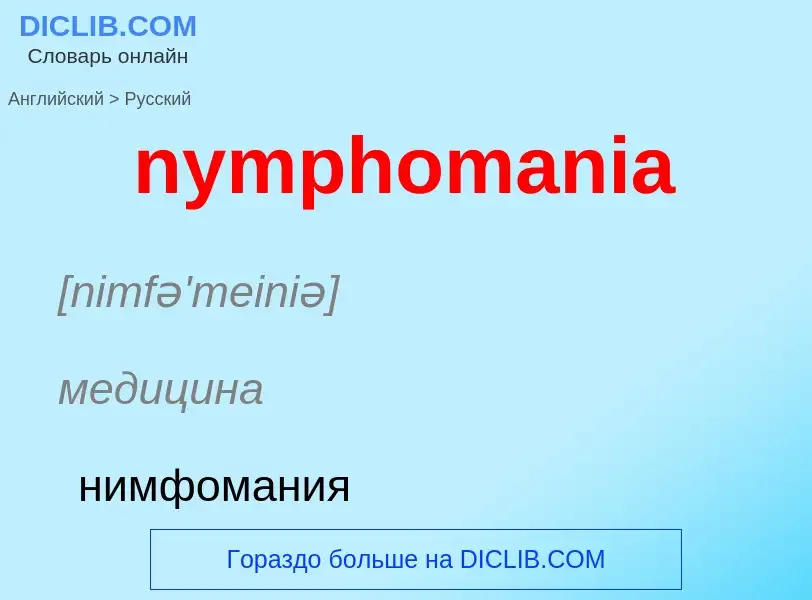Перевод и анализ слов искусственным интеллектом ChatGPT
На этой странице Вы можете получить подробный анализ слова или словосочетания, произведенный с помощью лучшей на сегодняшний день технологии искусственного интеллекта:
- как употребляется слово
- частота употребления
- используется оно чаще в устной или письменной речи
- варианты перевода слова
- примеры употребления (несколько фраз с переводом)
- этимология
nymphomania - перевод на русский
[nimfə'meiniə]
медицина
нимфомания
андромания
существительное
медицина
нимфомания
['nimf|əu]
существительное
сленг
нимфоманка
Определение
Википедия
Hypersexuality is extremely frequent or suddenly increased libido. It is controversial whether it should be included as a clinical diagnosis used by mental healthcare professionals. Nymphomania and satyriasis were terms previously used for the condition in women and men, respectively.
Hypersexuality may be a primary condition, or the symptom of another medical disease or condition; for example, Klüver–Bucy syndrome or bipolar disorder. Hypersexuality may also present as a side effect of medication such as drugs used to treat Parkinson's disease. Clinicians have yet to reach a consensus over how best to describe hypersexuality as a primary condition, or to determine the appropriateness of describing such behaviors and impulses as a separate pathology.
Hypersexual behaviors are viewed variously by clinicians and therapists as a type of obsessive-compulsive disorder (OCD) or "OCD-spectrum disorder", an addiction, or a disorder of impulsivity. A number of authors do not acknowledge such a pathology and instead assert that the condition merely reflects a cultural dislike of exceptional sexual behavior.
Consistent with there not being any consensus over what causes hypersexuality, authors have used many different labels to refer to it, sometimes interchangeably, but often depending on which theory they favor or which specific behavior they were studying. Contemporary names include compulsive masturbation, compulsive sexual behavior, cybersex addiction, erotomania, "excessive sexual drive", hyperphilia, hypersexuality, hypersexual disorder, problematic hypersexuality, sexual addiction, sexual compulsivity, sexual dependency, sexual impulsivity, "out of control sexual behavior", and paraphilia-related disorder.

